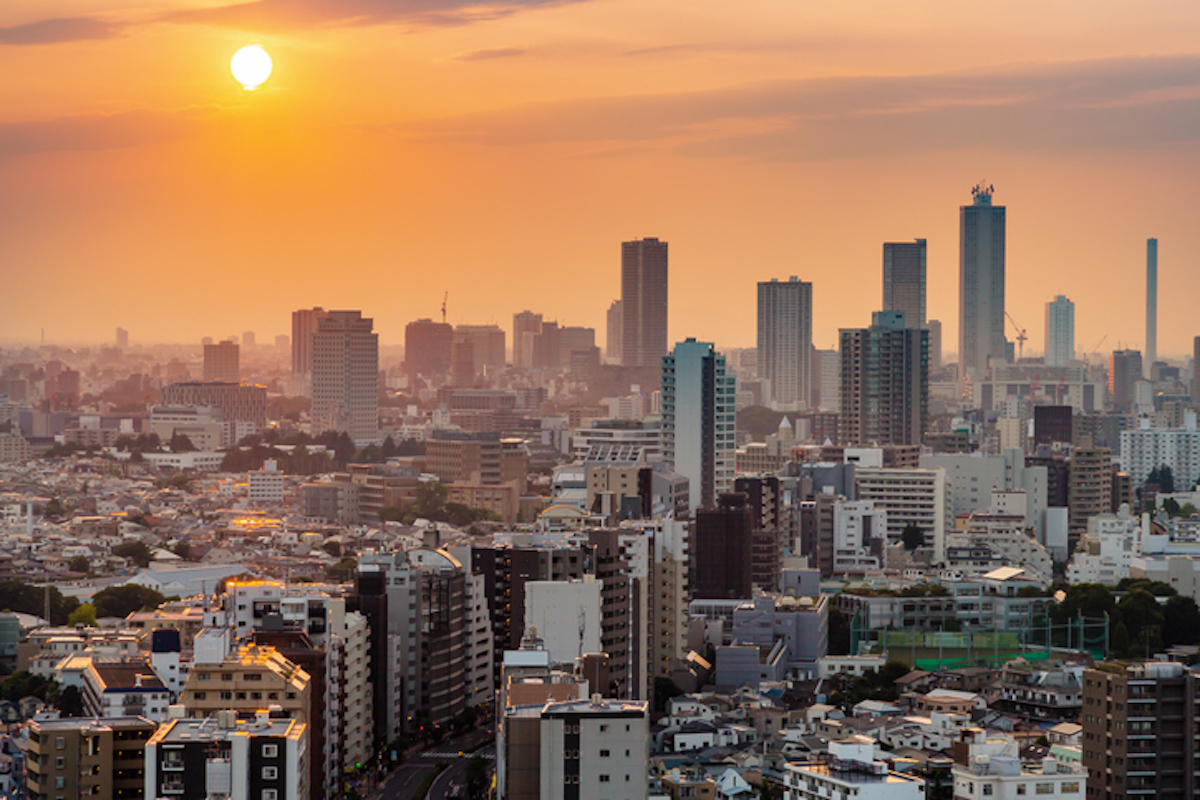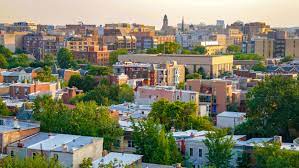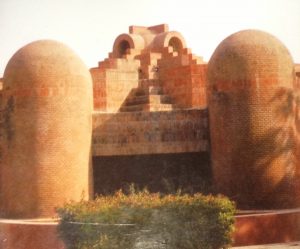LS Polls- Phase I Voting: 40 per cent turnout recorded in 6 hrs
The polling is underway in 102 constituencies spread across 21 states and Union Territories.
Due to intense concretisation, clamped spaces, suffocated housing structures and lack of ventilation in urban centers, ‘the urban heat island effect’ creates cities 4-12 degree warmer than their rural counterparts where green cover is relatively more.

Urban heat island effect: The country reported around 280 heat wave days from March 11 to May 18, the highest in 12 years across 16 states in 2022. The reduction in the difference between Maximum and Minimum temperatures is not sparing urban people from heat even at night. As the high temperature is prevalent even after the sun sets in, it makes it impossible for the concrete houses to cool down which forces heat to remain trapped inside the concrete walls.
According to experts, where the ideal night temperature should be around 20-25 degrees Celsius, The minimum temperature in Delhi touches 35-39 degrees Celsius.
This phenomenon forces us to experience the “Urban Heat Island Effect”, where the gap between the maximum and the minimum temperature reduces. The effect was first observed by the scientist Howard in London in the 1800s and the term was coined by the Scientist Manley in 1858. Following this effect, the metropolitan area being converted into heat pockets. A 2020 study by the Indian Institute of Technology (IIT), Delhi, says the South and East districts of Delhi have 9 heat islands each, which is a huge number in an area of just 64 square km.
Advertisement
Cities create “Urban Heat islands” when there are dense clusters of pavements, buildings, and other surfaces that absorb and hold heat in place of natural vegetation like trees and other flora. This has an impact on rising energy expenditures (e.g Air Conditioning), air pollution levels, illnesses, and deaths brought by the heat.
Along with the formation of Urban Heat Islands, Cities are also experiencing a phenomenon called “Wet Bulb Phenomena ” which measures heat, humidity and the lowest recorded temperature. If the ‘Wet Bulb’ temperature rises above 32 degrees, making it difficult for people to work outdoors as humans lose their capacity to regulate body temperatures lead to heat strokes, collapse, etc. Between June 25 to June 28 this year Delhi recorded more than 33.7 degrees wet bulb temperature which increased the feel-like temperature up to 55 degrees, even at 40-41 degrees, the effect is further propagated by the island effect.
What causes Heat Islands to form?
As concrete replaces greenery in the cities due to the construction of roads, buildings, and other infrastructure facilities required to serve expanding populations, heat islands begin to appear. The heat from the sun is absorbed by these surfaces rather than reflected because of concrete, asphalt and other material used for building purposes, raising ambient temperatures and surface temperatures.
Displacing trees and plants reduce the natural cooling benefits of evaporation of water from soil and leaves. Tall buildings and narrow streets can trap and heat air, reducing airflow. Waste heat from Air Conditioners, exhausts and other industrial effluent also propagate the effect.
Due to intense concretisation, clamped spaces, suffocated housing structures and lack of ventilation in urban centers, ‘the urban heat island effect’ creates cities 4-12 degree warmer than their rural counterparts where green cover is relatively more.
Impact of ‘Heat Islands’
Urban heat islands can have negative effects on human health due to increased air pollution, decreased night-time cooling, and rising temperatures. Extreme heat beyond 35 degrees can cause severe damages to the human body. Increased overall pain, tiredness, heat-related mortality, respiratory issues, headaches, heat stroke, and heat cramps are some of the problems associated with excessive heat. According to the data published by National Crime Records Bureau (NCRB), over 20,000 people have died due to heat waves in the past 20 years.
Urban heat islands can exacerbate the effects of heatwaves, resulting in unusual weather periods. These can have a major negative impact on the health of groups that are more susceptible to the effects of the weather, such as the elderly, and children.
The ‘Island Effect’ creates a divide
It is often said that the onus to battle against catastrophe lies on the marginalised one. The urban heat island effect creates a divide among the privileged and the non-privileged while leaving the latter more vulnerable.
A study by National Sample Survey Report reveals that the poorest households in urban areas only have 8 sq.m of housing space compared to 12 sq. m recommended by WHO.
While the rich heavily depend on Air Conditioners, the thermal heat impacts the poor. Most of them live in crowded settlements with low ventilation which further prevents them from recovering from the trapped heat.
Price of the development
The Union Ministry of Environment, Forest and Climate estimates that at least 178 sq.m. of residential area has been added in India every year.
Concretisation, cramped spaces and reduction of green area in urban settings as prime reasons for the ‘heat island effect’ forces us to think, was it wise enough choosing the development and world-class infrastructure while trading off the trees, plants and other natural, sustainable and traditional resources?
The brunt of development would have to be borne by us only.

We all have been experiencing the scorching heat all day long, longing for the shade of a tree on the roads. The AC bills have been burning a hole in the pockets.
This calls for a sustainable way of planning and developing urban development projects without altering the ecology.
Ways to reduce impact of ‘Urban Heat’ phenomenon
The layout of the building becomes very important in terms of controlling the air movement and the heat trapped inside. According to the Central Public Work Department, the distance and height between the buildings determine the sunlight penetration. The Department says the window of the lower floor of a building should subtend an angle of 22.5 degrees with the top of the adjacent building.
Using reflective roof surface
Researchers suggest the usage of surfaces that reflect back the sunlight such as green roofs, dark surfaces, and tinted glasses in order to reduce the trapping of heat.
Eco-friendly construction materials
According to the International Journal of Engineering Research and technology, Concrete has a high capacity to store heat and is referred to as a ‘high thermal mass’ material which is one of the major causes of the urban heat island effect. It stores heat for a longer duration of time therefore if we find an alternative to concrete and such materials urban heat island effect can be reduced to a great extent. The use of other highly reflective materials like glass or metals should also be reduced to assist in the reduction of the heat island effect and save the environment.
Materials used in construction also play a vital role, burnt clay brick, Autoclaves concrete (AACs) blocks and ash bricks are some of the materials which are eco-friendly as well as innovative solutions.
Vertical landscaping
Tall buildings can be supported with vertical landscaping so that they do not provide a larger surface area for the building material to absorb and re-emit heat to the surroundings and increase the overall temperature of the surrounding which results in a heat island effect. This can also reduce the urban canyon effect caused by tall buildings in the urban areas.
The journal also suggested a reduction of dark-coloured covered areas by covering black asphalt streets, parking lots, and dark roofs with a more reflective grey coating. These changes can drop urban air temperatures dramatically, especially during the heat of summer. This can decrease the black body effect which is the cause of the urban heat island effect.
Increasing Shade and natural landscape in urban areas Plant trees and vegetation that lower surface and air temperatures by providing shade and cooling through evapotranspiration. This will lower the overall temperatures in the surroundings and lower the heat island effect.
Environment-friendly Construction
Laurie Baker, commonly known as “Gandhi of the Architecture ”, also an expert in building houses with locally sourced materials in cost-effective and sustainable ways has suggested the usage of materials like cow dung, rice husks, bamboo strips, and palm fibers. His style focused on traditional masonry style following the use of Brick “Jali” walls for natural ventilation, slipping roofs, and terracotta tiles which allow hot air to escape.
Terracotta tiles made up of red clay are energy-efficient and have unmatched durability.

A difference of at least “3 degrees” is created between the outdoors and the building following this style.
Dakshinachitra Museum in Tamil Nadu is a marvel made by the architect following the aforementioned style.
Another notable architect – Mr. Satish Gujral, gave the idea of “Organic Architecture” as a very innovative design approach. Organic architecture is a design that emphasises the direct use of materials. ‘Organic’ therefore implies logical and natural growth, harmony within the structure, and a sense of belonging evident in the relationship of the building.” The architect positioned each structure so that it is entirely separate but connected by a network of tunnels and landscaped courts, which act as the unifying element.
The Embassy of Belgium, situated in Chanakyapuri, Delhi, has been built in the same way.

In these times, where the world is looking for sustainable existence, building an inexpensive, cost-effective, traditional style of design would be the way forward.
Advertisement